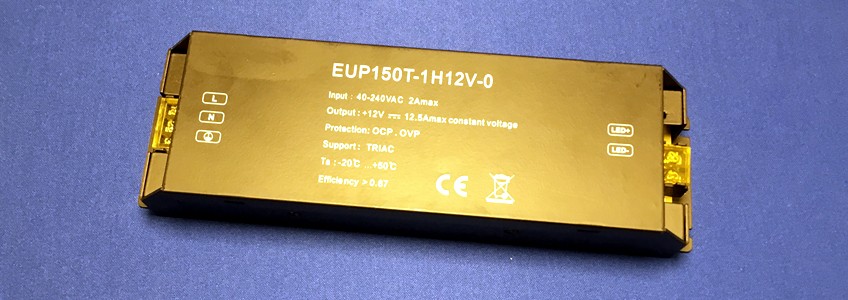Due to the advantages of using LEDs from money saving to their energy efficiency, Using them to light your home is becoming more popular than ever. There are different ways to dim LED strip lighting and when fitting fitting LEDs, a common question that comes up is ‘how do I get my LED lights to dim?’ Please see below for some advice and guidance on SDL Lightings options for Dimming.
There are a variety of methods that can be used for LED dimming each with its own advantages. It always depends on the type and size of project you are involved in.
Triac Dimming
Triac dimming which is also known as mains dimming is one of the simpler ways to control light output of your LED strip lighting. here at SDL Lighting, we supply Mains dimmable drivers in 10w, 30w, 40w, 75w and 150w. To install a mains dimmable driver, all you have to do is wire the LED Strip to the 12V output. As our Mains Dimmable Drivers work in conjunction with most leading and trailing edge Triac Dimmers, you can simply connect the input side up to many standard household dimmer switches. With this simple set up, you will be able to control your lights from the wall control, showcasing the smoothness of the dimming feature. You can also connect multiple mains dimmable drivers to a mains switch, this helps if you have multiple strips to control that exceed one drivers capacity.
Dali Dimming
LED control systems using this technology are best for more larger projects that need a system in place which can dim and control LED strip lights across a whole complex from one main DALI switch. Once your LED lighting system is up and running, the Dali control will let users manually switch on and off the lighting, it will also let you control the brightness. Another great feature is that it can run lighting programmes at set times. Dali systems are more commonly found in places such as hotels, offices, larger commercial stores. When it comes to installation, your DALI dimming receivers should be wired between your 12V LED strip lights and the transformer. Once they are in place, you are in a position to connect all DALI receivers together using signal cable and running them back to the main DALI switch.



